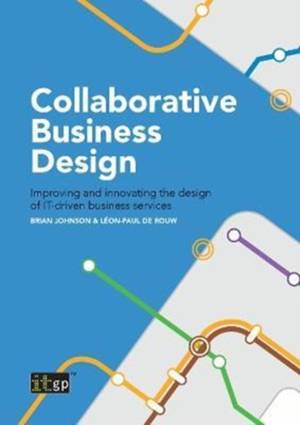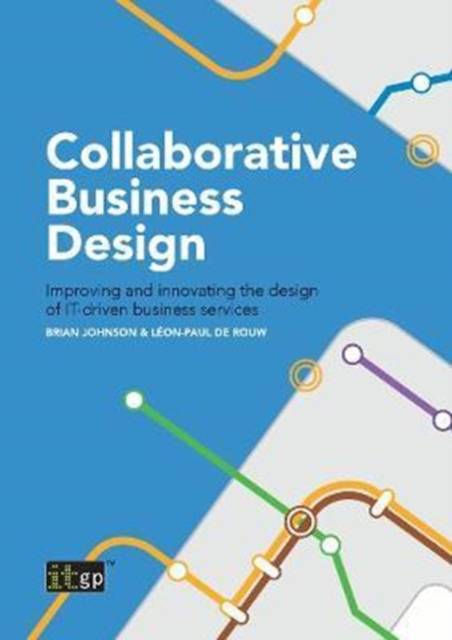
- Retrait gratuit dans votre magasin Club
- 7.000.000 titres dans notre catalogue
- Payer en toute sécurité
- Toujours un magasin près de chez vous
- Retrait gratuit dans votre magasin Club
- 7.000.0000 titres dans notre catalogue
- Payer en toute sécurité
- Toujours un magasin près de chez vous
Collaborative Business Design
Improving and innovating the design of IT-driven business services
Brian Johnson, Leon-Paul de RouwDescription
Only by understanding IT-driven business services and anchoring them in a service design statement (SDS) can enterprises translate business needs into IT-intensive business services.
In Collaborative Business Design - Improving and innovating the design of IT-driven business services, Brian Johnson and Léon-Paul de Rouw comprehensively explain how to use business service design (BSD) to formulate an effective SDS that will help business and IT cooperate to create robust, efficient services that support business requirements.
Product overview
Collaborative Business Design delves into the inner workings of services, with the aim of making sure that each side - business and IT - understands the other's needs and drivers so that services can deliver what is required, expected and promised throughout their lifecycle. It:
- Examines the gap in understanding between IT and business.
- Introduces BSD - an analytic approach to understanding the characteristics of IT-driven business services.
- Provides an overview of the components and characteristics of IT-driven business services.
- Considers the different parts of the BSD and SDS.
- Offers insight into the design of IT-driven business services using BSD.
- Discusses practical consequences for business transformation to continuously define, develop and improve services that customers want to use.
Full of useful diagrams and examples (and quotations from an unusual range of sources including Star Trek, Mick Jagger and Oscar Wilde), Collaborative Business Design explains how to guide the development, building, programme management, and maintenance of IT-driven business services.
Introducing business service design (BSD)
BSD is a simple approach to designing the overarching architecture of any IT-driven business service.
It merges the pragmatism and logic of the UK Government Gateway method with service blueprinting and the stakeholder approach to gaining consensus.
BSD is not an architecture for software development or for technology support - it complements existing frameworks such as TOGAF, IT4IT, BiSL(R) Next and ITIL(R) by focusing on business architecture, a subject rarely discussed before designing an IT-intensive, complex business service.
Who should read this book
This book is intended for anyone responsible for designing and implementing IT-driven services, or who is involved in their operation. This includes everyone on both sides of supply and demand, including:
- Internal and external service providers, such as service managers, contract managers, bid managers, lead architects, requirement analysts
- Business, financial, sales, marketing and operations managers who are responsible for output and outcome
- Sales and product managers who need to present and improve service offerings
- Developers who need to develop new and improved services
- Contract managers and those responsible for purchasing
- Consultants, strategists, business managers, business process owners, business architects, business information managers, chief information officers, information systems owners and information architects
About the authors
Brian Johnson has published more than 30 books, including over a dozen official titles in the IT Infrastructure Library (ITIL), many of which are used worldwide. He designed and led the programme for ITIL version 2. Léon-Paul de Rouw studied technical management and organisation sociology. He worked for several years as a consultant and researcher in the private sector.
Spécifications
Parties prenantes
- Auteur(s) :
- Editeur:
Contenu
- Nombre de pages :
- 129
- Langue:
- Anglais
Caractéristiques
- EAN:
- 9781849289382
- Date de parution :
- 06-07-17
- Format:
- Livre broché
- Format numérique:
- Trade paperback (VS)
- Dimensions :
- 210 mm x 297 mm
- Poids :
- 353 g

Les avis
Nous publions uniquement les avis qui respectent les conditions requises. Consultez nos conditions pour les avis.






